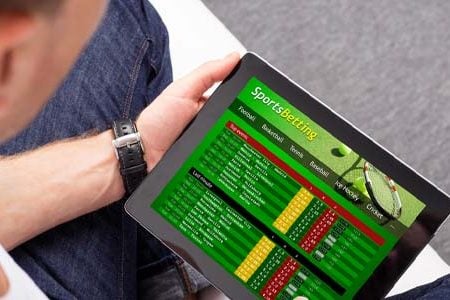When people look for the best Texas sportsbook, the conversation usually revolves around odds, promotions, and bonuses. What often gets overlooked is the role of the “juice,” also called vigorish or vig. That’s the built-in commission the book charges on bets. It doesn’t matter how sharp your picks are—if you don’t understand juice, your long-term profits will suffer.
The sportsbooks try to adjust the odds to favor them, which leads to them making more profit, which could get pretty complicated to figure out. Texas gamblers who wager online or are traveling need to understand how the juice works for their betting strategy to remain efficient.
You want a simple breakdown. You’ll discover the origin of juice, what it practically means, and how to figure it out on the payouts. Then, we’ll move on to the advanced stuff, like live betting, line movement, and risk. You’ll receive a complete plan on how to minimize the losses to juice, plus case studies demonstrating the concept from different angles—success and failure.
You’ll be able to read odds more closely, identify when the juice makes a bet unreasonable, and adjust your wagering strategy to get more value out of it. Overall, you’ll get a more advanced understanding of the concept.
The Roots of Sportsbook Juice
In sports betting, the challenge has always been how to balance the two sides of a wager. Early bookmakers in Europe and the United States profited from crude margin systems that guaranteed a profit, regardless of the outcome. This profit margin evolved into what the betting world now refers to as the juice.
In traditional point spread betting, a bettor might see odds of -110 on both sides. That means you must risk $110 to win $100. Without juice, the odds should sit at -100 on each side (an even-money wager). The gap is the sportsbook’s commission.
When betting became more popular, especially in Nevada and other places, the standardization of ‘juice’ began. Nowadays, sportsbooks use juice to minimize risk. By adjusting the odds, sportsbooks can make bets more favorable to themselves and minimize risk on one-sided bets.
Ultimately, juice is the cost of access to the betting market. It is like the brokerage fee for accessing the betting market, which is left in every market transaction. Understanding this cost is the first step in managing it.
Deep Dive into Sportsbook Juice
1. Principles of Juice
There isn’t a flat fee for juice; it’s incorporated into the odds. No matter the format. American, decimal, or fractional, all odds exceed a 100% implied probability. That excess percentage is the margin.
Example:
Team A: -110
Team B: -110
Convert these to implied probabilities:
Team A: 52.38%
Team B: 52.38%
Combined: 104.76%
That extra 4.76% is the house edge. Over thousands of bets, it guarantees the book a profit.
2. Mechanics of How Juice Works
Every type of wager has different levels of juice.
- For spreads, it’s most commonly -110 on both sides, but it can go from -120 to -105.
- For Moneylines, the juice is hidden between the favorite’s and underdog’s price gap.
- For totals, it’s usually the same as spreads.
- Props and parlays can have much higher juice due to the lower pricing efficiency.
Books change the juice because of the volume of cash on the betting line. If too much money comes into one side, they will raise the juice and keep the line in order to remain balanced.
3. Advanced Applications
Sharp bettors keep an eye on the ‘juice’. Shifts in lines tell bettors how the market is responding. For example, if the odds move from -110 to -120 and the spread doesn’t change, it means one side of the bet is getting the most action. This is an indicator that they have a line that is seen as overvalued.
The nature of the odds and spreads offered on a bet is different when it comes to live betting. They are more dynamic and change more frequently. The overbets when betting live may have higher juice as volatility increases.
This is where a refined Texas sports betting strategy becomes critical. Without factoring in juice, even a solid record can still produce net losses.
4. Common Challenges and Solutions
Hidden Vig in Parlays
Take apart the implied probabilities of each leg to see the compounded juice measurement.
Chasing Promotions
Determine if boosted odds actually surpass the vig, or if they’re just for show.
Lack of Consistency Across Books
Always check the lines from several operators. A 5–10 cent difference in juice will accumulate over time.
Misunderstanding Reduced Juice
Understand that -105 lines do not get rid of juice; they just reduce it a little. This can help in the long run.
Practical Guide
Here’s how to handle juice step by step:
- Use a free prob calculator to calculate American odds to implied odds
- Calculate the vig by adding the probabilities of both sides and then subtracting from 100%
- Remember to track your bets over time, including the juice paid, so you can fix the drag on your roi.
- Open accounts on multiple betting sites and always bet on the one with the lowest vig.
- Some betting sites have -105 lines as a promo so you can bet with reduced juice.
- Avoid over-juiced props as they have a vig of over 8-10%. Stick to sharper markets unless you have a solid advantage.
- Don’t increase your expected value with stacked bets because the added juice can collapse it.
- Odds comparison sites, vig calculators, and bankroll trackers are helpful tools.
Best Practices Checklist
- Never place a bet without knowing the juice.
- Compare at least two sportsbooks before locking in.
- Record your bets and outcomes to monitor impact.
- Focus on markets where juice is manageable.
- Prioritize reduced juice opportunities over flashy bonuses.
Frequently Asked Questions
Q: What does sportsbook juice mean in simpler terms?
A: Juice means the sportsbook’s commission on a bet. It’s why you have to bet $110 to win $100 on standard lines. Without juice, the odds would simply be even money. It’s unavoidable, but at least you choose lines for better pricing.
Q: How do you calculate the juice on a moneyline bet?
A: To calculate the juice left on the moneyline, you will start by converting the odds of each side to implied probabilities, followed by adding them, and lastly subtracting 100%. The leftover amount is the juice. If the favorite is -150 (60%) and the underdog is +130 (43.48%), the total is 103.48%. Juice is 3.48%.
Q: Why do different sportsbooks have different juice?
A: This comes from different business models, levels of competition, and how much risk a sportsbook is willing to take. Some sportsbooks offer reduced juice to attract sharp bettors, while others stick to -110 all the time. The only way to consistently lower the vig is to shop around.
Q: Is juice ever zero?
A: In very rare cases, yes, to an extent. “No-juice” promos are marketing tools and typically capped. Every sportsbook has to collect vig eventually, and that is how they profit.
Q: Are the juices the same on props as the spreads?
A: No. Props have a higher juice because they are harder to price. The books put risk margin on those. A prop line could carry 7-10% vig. 4-5% would be on the spreads.
Q: How Texas Sportsbooks Adjust Odds During Live Betting Games?
A: Texas sportsbook live odds shift every play. Books raise juice during high volatility to protect themselves. For example, instead of -110, you might see -120 or worse. The faster the game swings, the higher the juice. It’s crucial to calculate vig before clicking.
Q: Can juice ruin a winning streak?
A: Yes. Picking 55% winners could still be wiped out by consistently paying -120. That is why shopping for lines is very important. The vig eats at small margins over time.
Q: How do reduced juice lines help?
A: Reduced juice, like -105 instead of -110, lowers the sportsbook’s edge. That might not sound like much, but over 1,000 bets, it can be the difference between profit and loss.
Q: Do parlays have higher juice?
A: Yes, because each leg compounds the vig. While payouts look huge, the built-in edge against you is much larger. Parlays are fun but dangerous for long-term profitability.
Q: Should beginners worry about juice right away?
A: Absolutely. Even beginners need to understand the cost of betting. Start simple: always know what you’re risking versus what you’re winning, and calculate vig on spreads to see how much you’re paying.
Case Studies
Success Example
A gambler kept an eye on the juice at three different sportsbooks. By shopping for the best lines, they brought the average vig down from 4.8% to 3.1%. Over the course of 500 season bets at $100 each, that difference saved $850. The lesson here is that small edges build up.
Failure Example
Another gambler concentrates on placing 3-5 leg parlays. Although their hit rate was reasonable, the Expected Value (EV) was destroyed by the juice. After 6 months, their bankroll dropped by 25% even though they claimed several big tickets. The lesson here is that the big payouts are merely disguises that hide the significant juice expense.
Future Considerations
Sports betting markets are changing quickly. Some operators are trying lower-juice models to stay competitive, particularly with more U.S. states opening betting markets. Tech-focused sportsbooks might one day enable peer-to-peer wagering, which will heavily lower fees and cut into traditional juice profits.
For Texas bettors, the biggest trend to follow is competition among national sportsbooks. If sportsbooks more widely offer reduced juice, the long-term worth of line shopping will massively increase. Understanding and being the first to follow these changes will benefit you a lot.
Making Every Bet Count
Juice is the silent factor shaping every wager. Ignore it, and your profits shrink no matter how sharp your picks. Understand it, and you gain control over your betting future.
Key takeaways: calculate vig on every market, compare multiple sportsbooks, and target reduced juice opportunities. Use tracking tools to measure your real return after juice. Learn from both successes and failures—small adjustments compound into meaningful results.
Next steps: commit to recording your bets and odds, expand your access to different operators, and stay updated on industry trends. Juice won’t disappear, but smart bettors know how to minimize its bite and maximize their long-term value.









